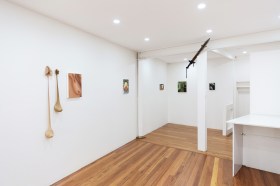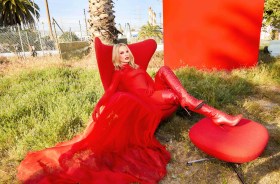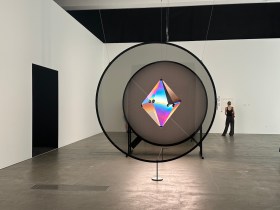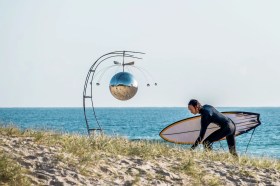It was eerily quiet in Gwangju when this reviewer arrived from Seoul a few days after the opening of the 15th Gwangju Biennale, an internationally recognised event that the Mayor described as the brand of the city through his remarks in the Biennale catalogue.
Many of those attending, it could be assumed, travelled to visit because of Nicolas Bourriaud, French critic and curator with a cult following in the industry. It was Bourriaud who coined the term ‘relational aesthetics’ in the 1990s and curated this 30th anniversary of the Gwangju Biennale.
In this review:
Nicolas Bourriaud’s PANSORI: A Soundscape of the 21st Century
‘Pansori’ is a genre of Korean music storytelling with a lineage dating back to the 17th century. The word, when taken apart, can be translated to ‘a place where many people gather’ and ‘song’. For Bourriaud, it’s the starting point for his iteration of the main Gwangju Biennale exhibition, where he wanted to create “a kind of opera of climate change”, drawing on cultures that have long understood the universe through sound.
Sound is a subtle, but constant, thrum in PANSORI: A Soundscape of the 21st Century. Emeka Ogboh planted an auditory panorama of Lagos in Gallery 1, the sound offering a different reality to that of Cynthia Marcelle’s installation Não existe mais lugar neste lugar [There Is No More Place in This Place] (2019-2024) of an empty, dishevelled corporate office.
A large, seemingly abstract canvas with a splash of Scheele’s green steals the attention as visitors make their way up from Gallery 1 to Gallery 2. The higher the monkey climbs the tree, the more it shows its ass (2022-23) by Noel W Anderson incorporates images of racist police brutality, accompanied by a jazzy cacophony of sounds at once unsettling and alluring.
Harrison Pearce’s installation is both mechanical and bodily, as robotic probes rhythmically jab at a pillowy rubber form that is a representation of a scan of the artist’s brain – the resulting sound matching that of the MRI. Expertly crafted and visually elegant, there is also a level of vulnerability in Valence (2024), as the pneumatic pistons perform their gentle ‘assault’.
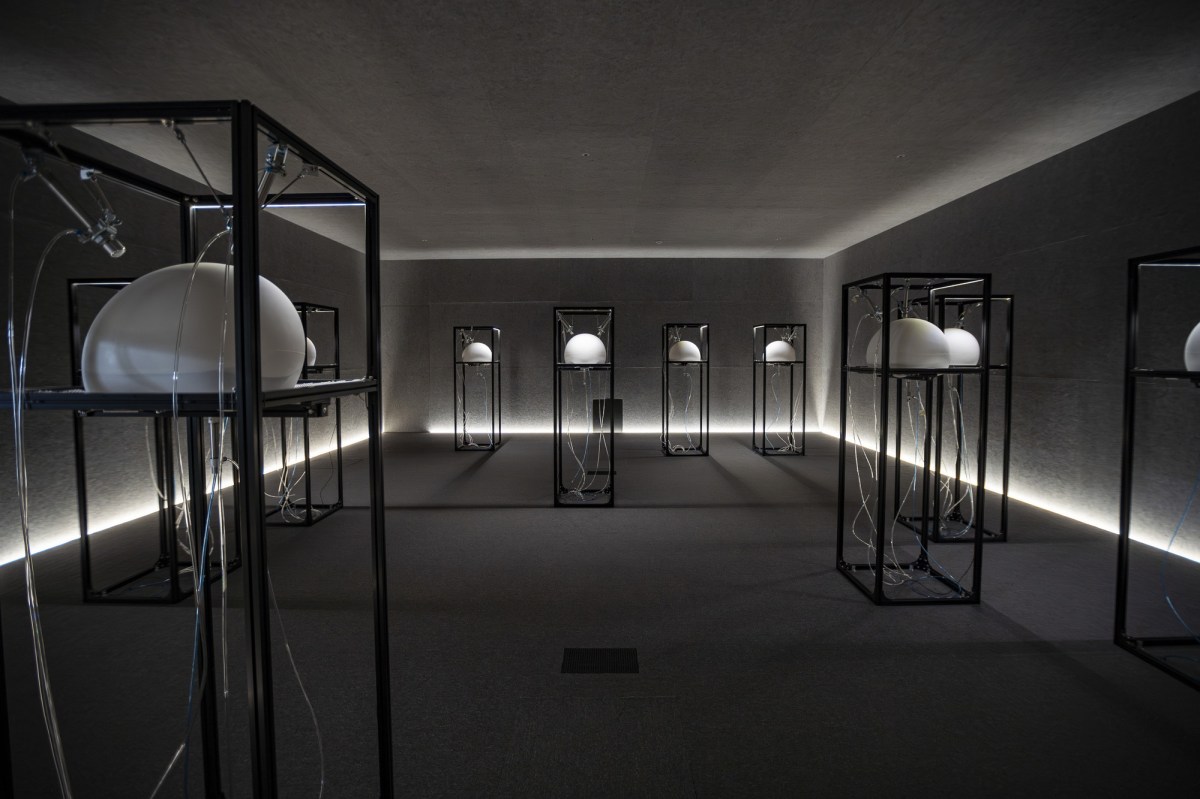
Video works by Hyewon Kwon and Yuyan Wang stood out the most for this reviewer. Kwon’s Cave of Portals (2024) presents an eerie narrative of people seeking refuge, while Green Grey Black Brown by the latter artist includes clips of trendy tech gadgets against a booming, operatic voice. And then there is Ecology for the Non-futures (2023) by Unmake Lab (collective duo Sooyon Song and Binna Choi), that uncovers ‘images of absence’ through curiosity, humour, and bizarre natural and human-induced encounters.
A number of artists have sought to create ‘environments’, from Marguerite Humeau’s *stirs (2024) – an enchanting visualisation of the origin of life with glowing planetary orbs – to Max Hooper Schneider’s sand-scape with a lush junk-filled oasis. What is most enticing in Schneider’s Lysis Field (2024) though, are these kinetic sand craters where small metal spheres create elaborate and mythic sand art, seemingly out of their own accord.
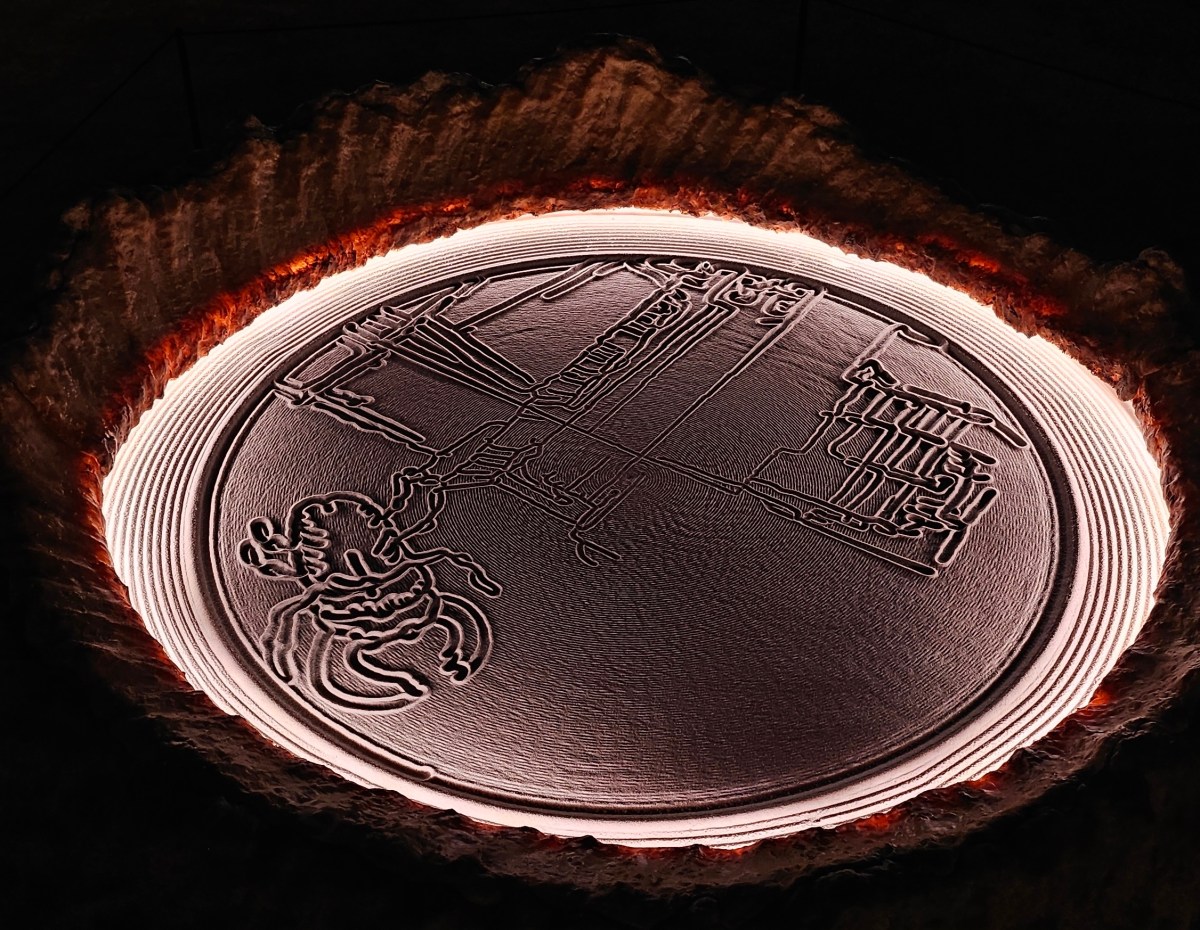
Paintings also have a place in PANSORI, and those by Anna Conway and Ambera Wellmann offer richly symbolic compositions with layered complexity. On the topic of two-dimensional works, an artist to watch out for is Frida Orupabo, whose collages embody the maturity and aura of someone much older than her 38 years of age.
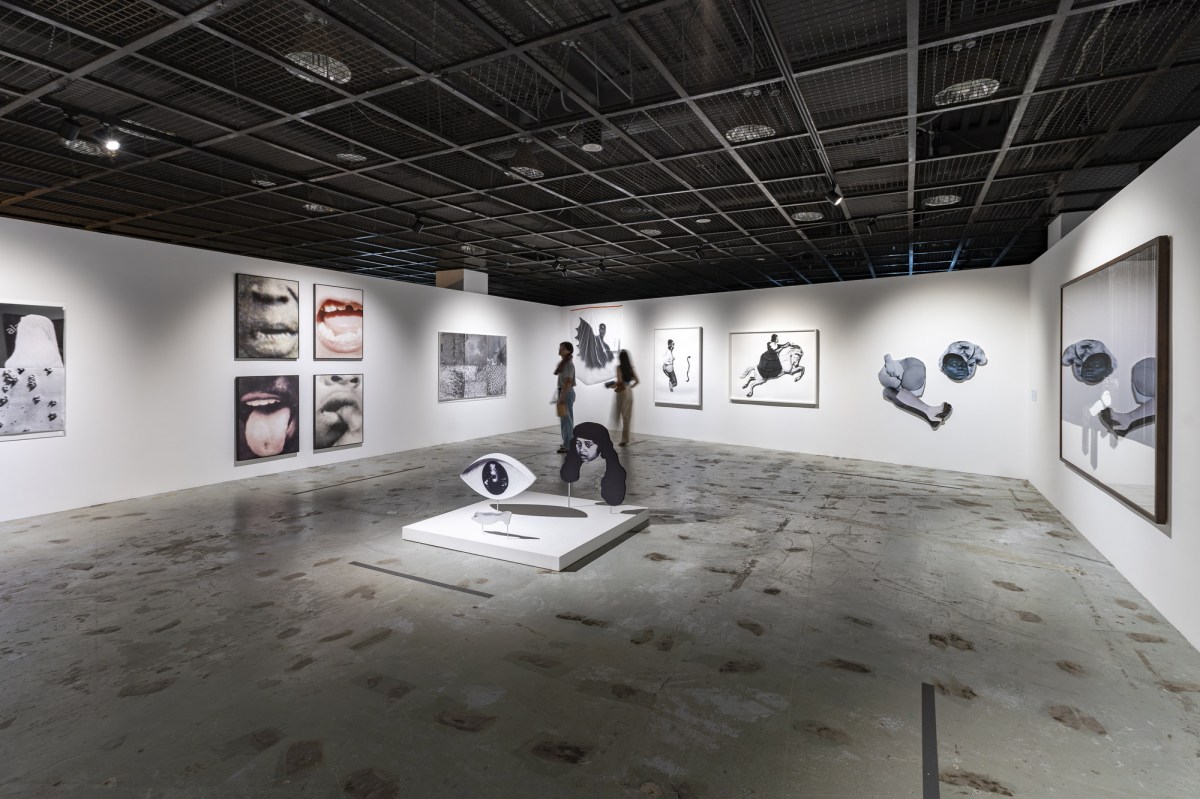
Read: Postcard from Seoul
For this reviewer, PANSORI was a two-and-a-half-hour journey accompanied by an attuned aural and spatial awareness to works by the 73 artists. It could be longer, especially if you are able to afford more time to the video works (we were racing against closing, three hours would’ve been a comfortable visit). The warehouse-like interior of the exhibition hall was utilised by Bourriaud with ease, albeit the venue is less architecturally captivating than Venice’s Giardini della Biennale, for example.
If you only have one day in Gwangju, I would highly recommend popping over to the Yangnim district after the main exhibition, where PANSORI continues in some satellite locations, including inside a rural Korean home (Empty House) and the Horanggasinamu Art Polygon on a picturesque hillside. There is also a cluster of national pavilions in the area, including those of Denmark, Canada, Austria and Poland.
National pavilion highlights
Important Questions (Union)
Described as a ‘temporary collective installation’, Important Questions is an independent project and collaborative group exhibition from the Netherlands, curated by artist Marc Oosting.
Contribution to and participation in culture can be examined as a form of labour, but play and curiosity is perhaps what grounds the experience. While many object to the categorisation of arts and cultural activities as entertainment, play is embraced as a vessel to prompt learning and reflection. The exhibition provides a sandpit for all of these considerations.
Upon entering Important Questions at the Eunam Museum of Art, visitors are invited to pick up a uniform vest by Oosting, which immediately places them in a position of active participation. The vest can then be worn around the show.
Bodil Ouédraogo’s wall-mounted sculpture of a hovering torso on the ground level is only a teaser for what is to come upstairs, with space carved out for a mini solo of provocative sculptures, hanging mobiles vaguely resembling the outline of hands cupping a breast, and photographs of a Black figure and African ‘artefacts’ printed on fabric, perhaps a satire on museum gift shop tea towels.
Objecthood is also explored in Jing He’s installation Following the Nonexistent Person (2024), with broken ceramics held together by binder clips, each a humorous composition with household familiarity that juxtaposes the hand-made and the manufactured, the elegance of tradition and the volatility of modernism.
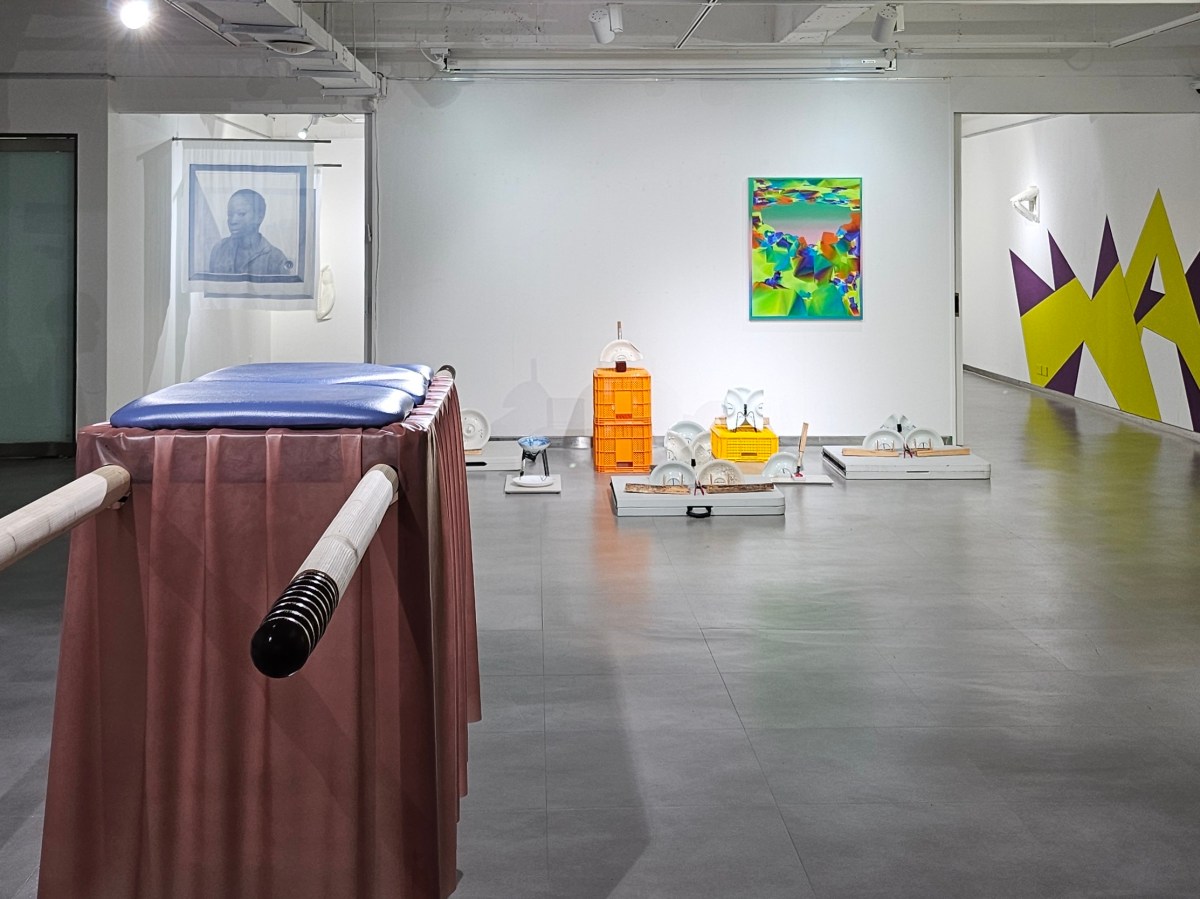
Alban Karsten’s video anthem My dreams are important (2024) captures the zeitgeist with a catchy tune and lyrics of radical self-love – it’s a total earworm, and it doesn’t hurt to have “taking care of myself is productive” stuck in your head.
Akiko Utsumi, The sounds ringing here now will echo sometime, somewhere (Japan)
I would nominate Akiko Utsumi’s installation as one of the most distinctive experiences among the Gwangju Biennale national pavilions this year. From the guided entrance, the hush atmosphere to the pitch darkness, until eyes adjust to catch tiny slivers of shimmering light, The sounds ringing here now will echo sometime, somewhere is as poetic as its title.
The installation constitutes delicate gold rods suspended in space, which move as the air inside the room shifts (when visitors enter, for example) to come in contact with each other and produce a crisp, ringing sound – a chain reaction.
Utsumi’s installation is situated inside the gallery of Culture Hotel Laam, while the second part of the Japan pavilion with the work of Terue Yamauchi is in Gallery Hyeyum nearby.
Heritage of the Golden Land: Mother’s Embrace (Myanmar)
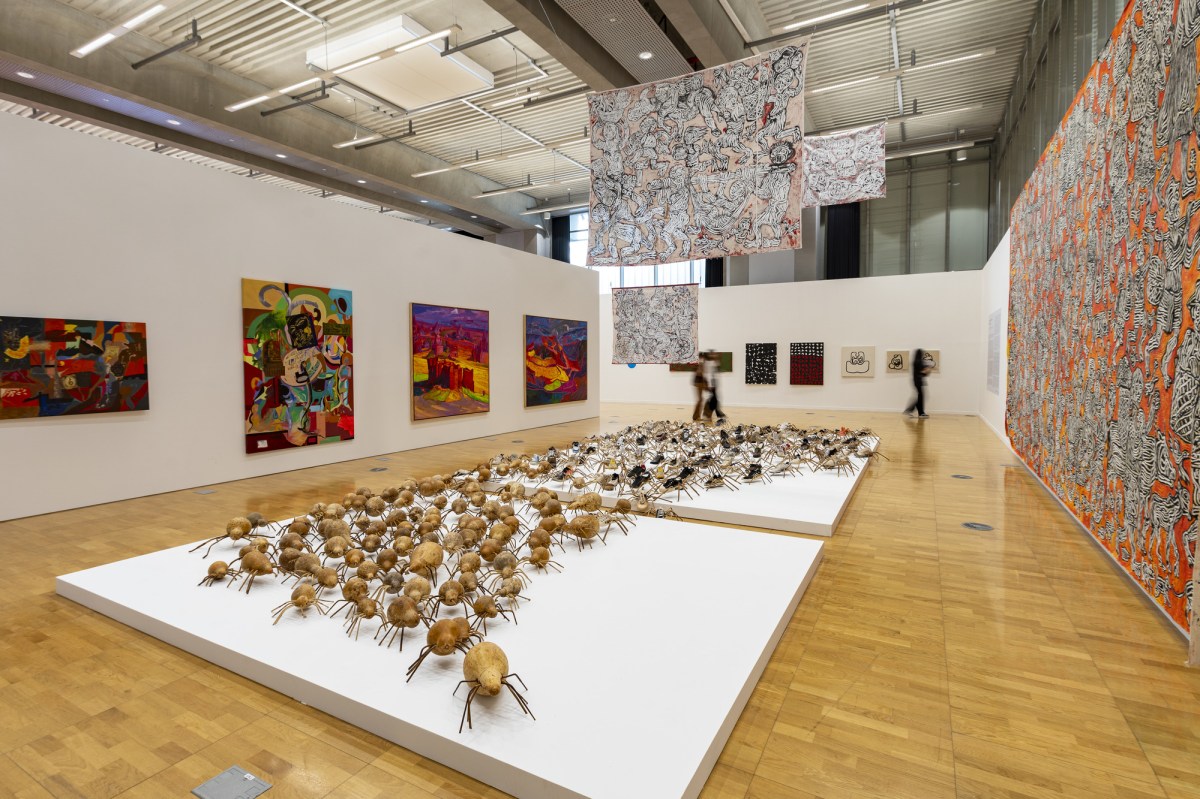
Curator Lina Jinhyung Kim has delivered the Myanmar presentation as an absolutely stunning centrepiece at the National Asian Culture Centre (ACC) with its cluster of exhibits from the South East Asia region.
A sprawling installation of ‘spiders’ with either dried gourds or old sneakers as bodies evokes the imagery of a herd or crowd on a journey – animated and otherworldly, but oddly human at the same time.
The exhibition taps into Myanmar’s diversity, but also the tension building from social fragmentation, with 135 ethnic minorities and a 2500-year Buddhist heritage.
Pieces by Aung Myint, Zaw Win Pe, Htein Lin, Htoo Aung Kyaw, Chan Aye and Khin Maung Yin trace societal shifts grounded in the everyday, hoping to invite global dialogue around tradition and modernism.
Southeast Asia’s Green Legacy (ASEAN-Korea Centre)
Also in the ACC is a special exhibition presented by the ASEAN-Korea Centre, marking the 35th anniversary of ASEAN-Korea Dialogue Relations.
The exhibition is playful and vibrant while drawing on ecological themes, filled with real South East Asian plants by creative team Padosikmul, funky textile sculptures by MingYes Project and Seo Hyo’s digital iterations of hidden geometric forms found in the national flowers of 10 ASEAN member states.
It’s a good place to rest, breathe and learn a little more about the region’s biodiversity.
Katastematic Pleasures (Poland)
Poland’s national presentation ties in beautifully with Bourriad’s theme. ‘Katastematic pleasures’ is a Greek term referring to a state of being that lets go of unnecessary desires and anxieties, but artworks in the exhibition capture and project sound through multitude means.
Maciej Markowski’s 340.3 (2017) is a music composition that will never be heard by viewers, only ‘seen’, and IP Group’s pulsating sonic-visual landscape Discharge (Ambient Room #6) (2022-24), uses subversive means to challenge our perception of sound.
In Art is no longer for me (2022-24), Alicja Klich presents an installation that is actually about the letting go of artistic aspirations, driven by frustration towards institutional means of ‘making it’ in the art world.
The work visitors first encounter when entering the Leeleenam Studio is a hydraulic system pumping black liquid into Plexiglass engravings that depict scenes suspended on an ambiguous timeline. Przemysław Jasielski‘s practice sits at the intersection of engineering and art, and remember (me) (2024) carries viewers into a spatial and temporal reimagining of archival material from Warsaw’s Fabryka Samochodów Osobowych, a passenger car factory now owned by South Korean chaebol Daewoo Group.
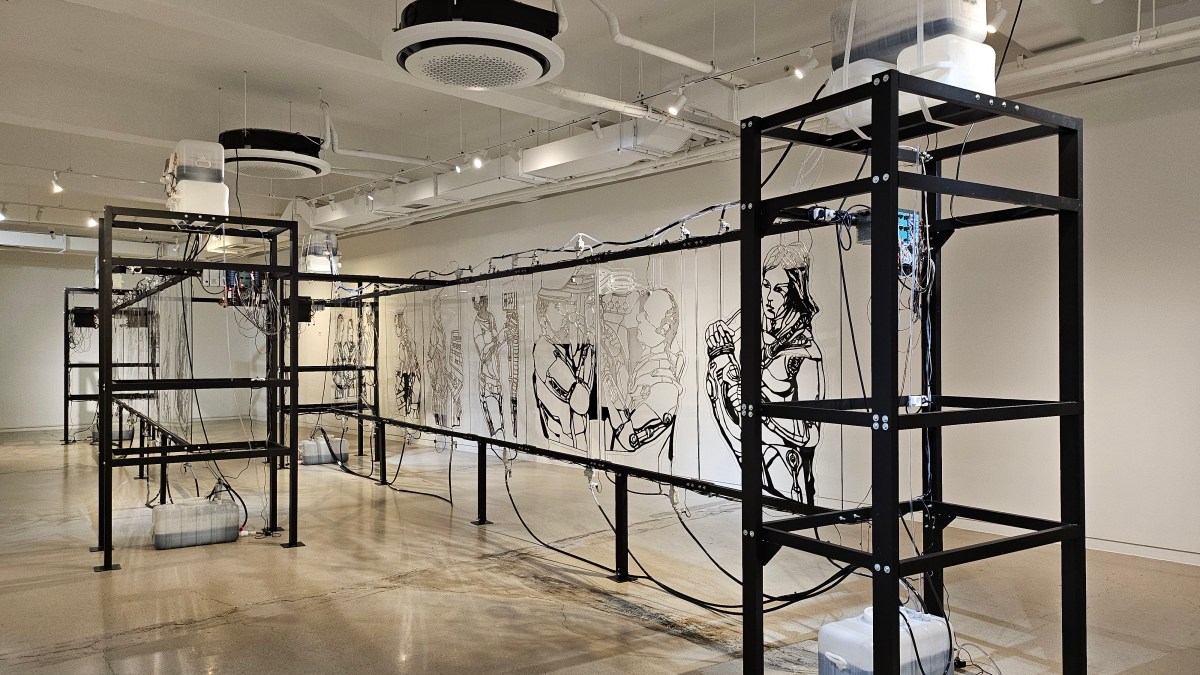
Rebecca Moccia, Ministry of Loneliness (Italy)
Out of all the solo presentations, Rebecca Moccia’s Ministry of Loneliness is a definite standout, the kind of exhibition in which you stay far too long when you know you should be moving on.
The exhibition is the product of a four-year practical and research project that took Moccia from the UK’s Ministry of Loneliness (established in 2018) to the Office for Policy on Loneliness and Isolation in Japan, brought together in a deeply compelling format that invites viewers down the rabbit hole of figuring out the distinct linguistic, psychological and social contexts of ‘loneliness’ – and how an emotion can become politics and business.
Video interviews, survey questionnaires, flyers, emails and entries from Moccia’s diary capture the nuances of a term and moment of being that seem so straightforward on the surface level, but difficult to fully understand and quantify.
Out of the many infographics presented, one in particular stuck with this writer – the use of the term ‘loneliness’ in English printed works was negligible before the 1800s and has steadily increased since then, with a spike between 1900 and 2000. What does this say about the state of our world?

The pavilions this writer visited are: Malaysia, Myanmar, Philippines, Singapore, Thailand, Vietnam, ASEAN, Indonesia, Korea Foundation-Gwangju Biennale Foundation (Asia Culture Centre), Japan, New Zealand, Union, American, British Council-Korea Foundation, Finland, Canada, Poland and Italy. Australia did not have a national presentation at the 15th Gwangju Biennale.
The 15th Gwangju Biennale and Pavilions are open from 7 September to 1 December 2024.


